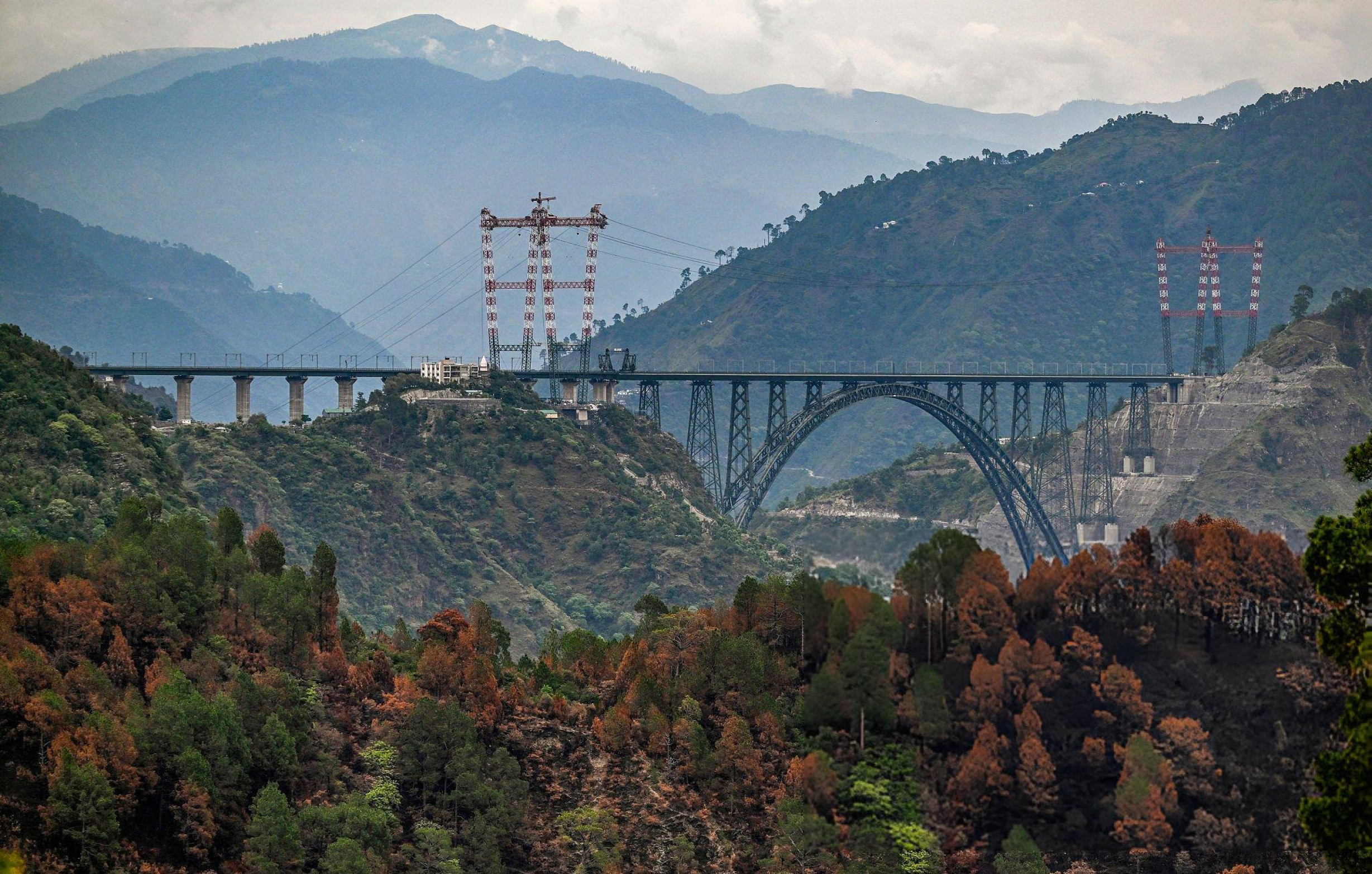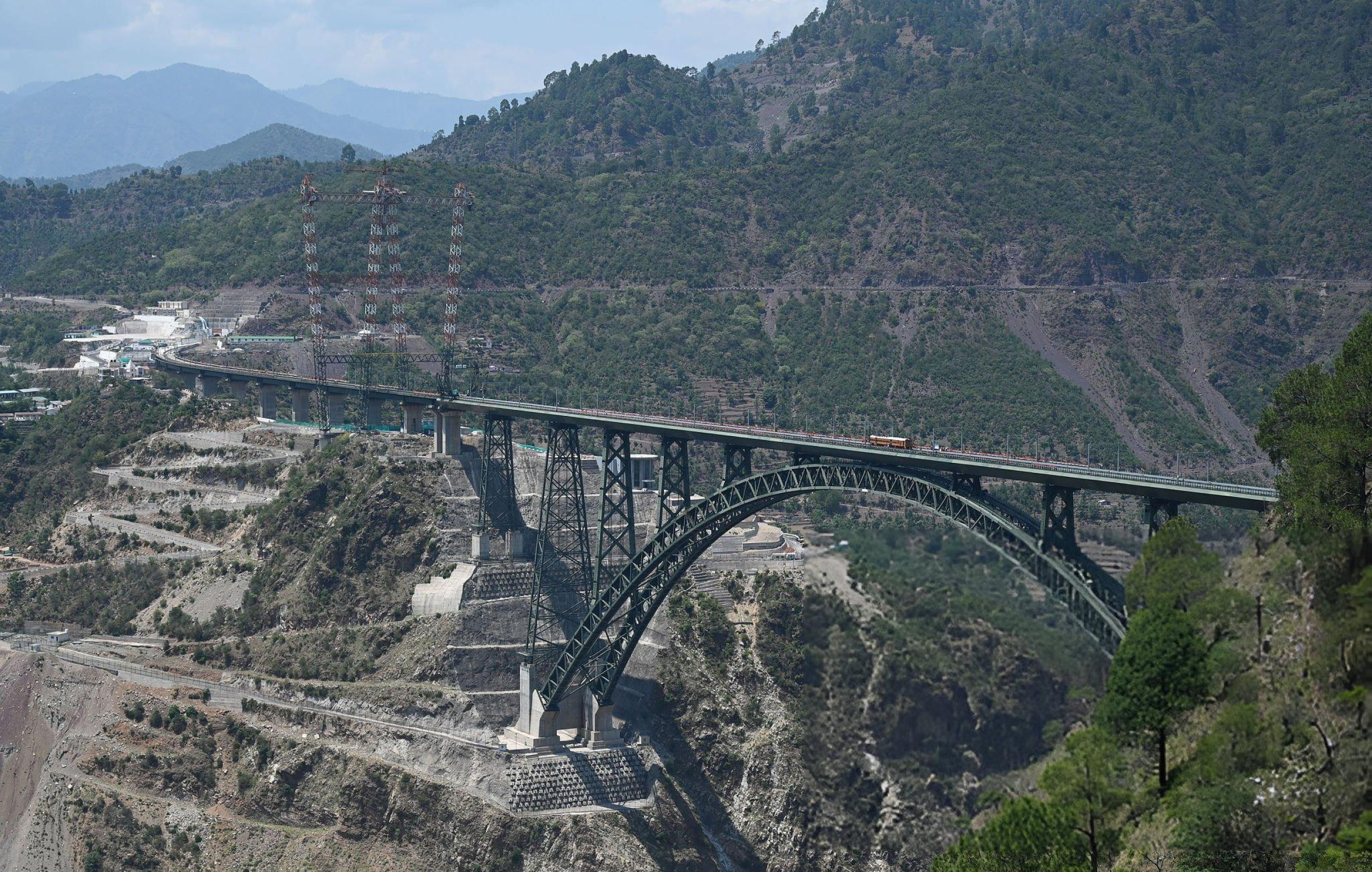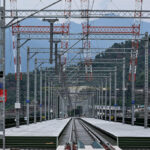1. Introduction: A New Chapter Begins
On June 6, 2025, Prime Minister Narendra Modi officially opened the Chenab Rail Bridge, marking the culmination of India’s most daring railway project. Soaring 359 meters above the Chenab River, it has established a world record for railway arch bridges. However, its significance extends well beyond just an engineering marvel; it promises to bring about a major transformation for the tourism and economy of Jammu & Kashmir (J&K).

In this blog, we’ll delve into:
- The bridge’s engineering design & strategic significance
- How tourism is set to flourish in the region
- The economic ripple affecting businesses and communities
- Broader regional and national implications
2. Setting the Stage: What Makes Chenab Bridge So Special?
2.1 Key Engineering Highlights
- Height: 359 meters—higher than the Eiffel Tower (324 meters)
- Length & Span: 1,315 meters with a central steel arch span of 467 meters
- Deck width: 14 meters—accommodates dual railway tracks + service walkway
- Construction materials: ~30,000 tonnes of steel, 46,000 m³ of concrete
- Lifespan: Built to endure for 120 years
- Resilience features:
- Earthquake resistance: Seismic Zone V compliance
- Wind resistance: Withstands gusts up to 266 km/h
- Blast resistance: Designed to tolerate up to 40 tonnes TNT-level blasts
It forms a pivotal part of the Udhampur–Srinagar–Baramulla Rail Link (USBRL)—a vital, 272 km rail corridor that transforms the accessibility landscape of Kashmir.
3. The Context: From Mountains to Mobility
3.1 USBRL—A Mountainous Challenge
Since its inception, the USBRL project confronted:

- Over 750 bridges and 140 tunnels, including several record-breaking structures
- Himalayan challenges: landslides, snow, altitude sickness, and seismic activity
- Rugged terrain where workers needed mule trails to reach construction zones until roads were built
3.2 The Strategic Vision
The USBRL was conceived not just for connectivity but for:
- Year-round access to Kashmir, especially during harsh winters
- Defense logistics in a frontier region
- Promoting socio-economic integration of Kashmir with the rest of India
The Chenab Bridge epitomizes this blend of engineering audacity and national purpose.
4. Chenab Bridge as a Tourism Magnet
4.1 Engineering Tourism: A Rising Trend
Engineering landmarks such as the Taj Mahal, Eiffel Tower, or the Golden Gate Bridge have become travel hotspots. Today, “engineering tourism” attracts:
- Architects
- Structural engineers
- Travel aficionados
- Content creators
With its record-breaking span and dramatic setting, the Chenab Bridge is poised to join this elite category.
Potential attractions:
- Vantage viewing platforms overlooking the gorge
- Drone snapshots and cinematic travel videos
- Guided “bridge walks” or engineering tours
4.2 Access to Untapped Regions
The bridge provides a direct rail link to:
- Reasi: Gateway to the bridge and destination for local viewpoints
- Kishtwar, Bhaderwah, Doda: Hidden gems with trekking, temples, and adventure tourism
- Tourist circuits integrating Vaishno Devi, Jammu, Patnitop, and scenic Kashmir routes
Improved rail access means longer stays, diverse itineraries, and better tourist distribution across J&K.
4.3 Cultural & Cinematic Appeal
- Photography hotspots: Majestic bridge—farms, rivers, pilgrims
- Film & advertisement potential: Bollywood or regional filmmakers may shoot sequences here
- Festival & event ideas: E.g., “Bridge Lights Festival”, drone shows, or adventure sports competitions
5. Direct Economic Overspill—Communities and Businesses
5.1 Hospitality Upsurge
Infrastructure creates opportunities:
- New hotel/homestay investments around Reasi and nearby towns
- Small restaurants and cafés gaining footfall from visiting tourists
- Railway-managed refreshment stalls with local flavors and crafts
5.2 Local Livelihoods
- Tour guides: Domestic and foreign visitors seeking historical narrations
- Transport drivers: Shared cabs and shuttles
- Artisans: Pashmina shawl makers, wood carvings, baked snacks, blankets
- Adventure services: Trekking, rafting, and camping operators
Estimates from the J&K Tourism Board: 1,000 tourists could generate up to 800 job-years in direct/indirect employment annually.
5.3 Milestone in GDP Contribution
Right now, tourism brings in about 7-8% of Jammu and Kashmir’s total economic output (GSDP). If the Chenab railway line gets connected, experts estimate that this could jump to 11-12% by 2028. This growth would likely be fueled by tourists spending more money per person and staying for longer periods.
6. Wider Regional and National Impact
6.1 Strengthening India’s Rail Infrastructure Legacy
The Chenab Bridge places India on the global stage in:
- Record-breaking construction milestones
- Pioneering techniques like incremental deck launching in helical curves
- Modeling future mega-infrastructure strategies in the Himalayas
6.2 Inspiring Confidence & Investment
Success of such mega-projects:
- Builds investor confidence in J&K and its peaceful stability
- Attracts private partnerships in tourism, hospitality, and experiential travel
- Enhances confidence among Indian and foreign tourists about safety and infrastructure reliability
7. Addressing Common Concerns
7.1 Will the Bridge Increase Tourist Flow Overnight?
- No—it will accelerate gradually.
- Initial buzz comes from engineering marvel enthusiasts and domestic travelers.
- Visitor growth will take shape over 2–3 years as amenities and access improve.
7.2 Cultural & Environmental Sustainability?
- Infrastructure: Designed with minimal ecological intrusion
- Community-led tourism: Emphasis on local homestays, artisans, and guided services
- Government oversight: Tourism Ministry ensuring responsible travel
8. Bridging Narratives—Infrastructure Meets Identity
Most important of all, the Chenab Bridge is not just a combination of steel and stone—it’s a narrative bridge across geography, history, and identity:

- Connecting Kashmir to India’s heartland—geographically and symbolically
- Granting agency to remote communities through economic and social mobility
- Highlighting India’s evolving image as a technical powerhouse tackling extreme environments
More Read
9. Join the Journey: Watch the Visual Story
Curious to learn more? Our YouTube segment, “Chenab Rail Bridge World’s Tallest Railway Arch | Defying Gravity at 359 m!”, vividly portrays the tale by:
- Drone visuals capturing the vast valley
- Clips showing construction stages, spanning cables, and arch closure
- Expert voices explaining engineering design and strategic value
Check it out now on The Vue Times to witness the spectacular bridge spanning across mountains: Watch Here
Frequently Asked Questions (FAQs)
Q1: Can tourists near the bridge location now?
No, the area within rail operational zones is restricted. Viewing platforms are planned for public access.
Q2: When will train services begin?
Trial runs have already started in 2024. Official passenger service expected by mid-2025.
Q3: Where is it located?
Near Reasi district, spanning Bakkal and Kauri stations on the Katra–Banihal route.
Q4: What’s the best time for tourists?
April–June and August–October offer stable weather and picturesque conditions.
Q5: How do I experience it?
Take a train from Jammu Tawi or Katra toward Srinagar. A short halt at Reasi allows sightseeing.










